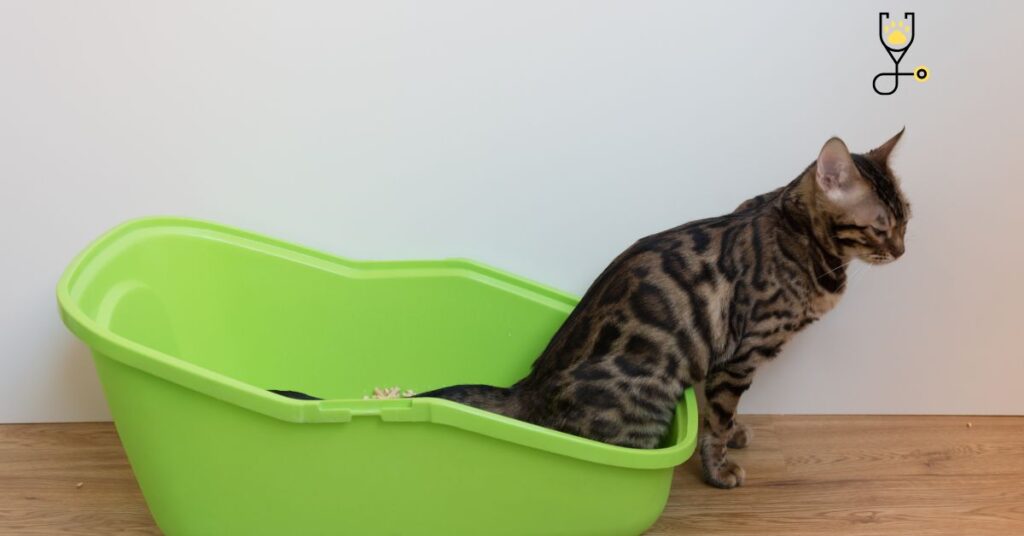Polycystic kidney disease (PKD) is a hereditary disorder found in cats. The disease results in multiple fluid-filled cysts on the kidneys, which can lead to organ failure and death. While there is no cure for PKD, early detection and treatment can help extend your cat’s life. In this post, we’ll take a closer look at PKD in cats, including the symptoms to watch out for, causes, and treatment options. Let’s get started!
What is Polycystic Kidney Disease?
Polycystic kidney disease (PKD) is a hereditary disorder that results in the formation of multiple cysts on the kidneys. The cysts are filled with fluid, and as they grow, they begin to take up more and more space within the organ. This can eventually lead to kidney failure, as well as other health problems.
PKD is a slowly progressing disease, and it can take several years for the symptoms to become apparent. Unfortunately, there is no cure for PKD, but early detection and treatment can help to slow the progression of the disease and extend your cat’s life.
General Causes of Polycystic Kidney Disease in Cats
Polycystic kidney disease is an inherited disorder that is passed down from parent to offspring. The condition is caused by:
- A mutation in a gene that regulates cell division(cystic renal dysplasia)
- A defect in a gene that controls the movement of potassium and sodium ions in and out of cells (cystinuria)
- A problem with the way the kidneys develop in the womb
These mutations can occur spontaneously or be passed down from generation to generation.
Most prone Breeds to develop Polycystic Kidney Disease
- Siamese
- Birman
- Manx
- Persian
- Himalayan
- British Shorthair
- Siamese
Symptoms of Polycystic Kidney Disease in Cats
The symptoms of PKD can vary depending on how advanced the disease is. In the early stages, there may be no outward signs of the condition. As the disease progresses, however, your cat may start to exhibit some of the following symptoms:

– Increased thirst and urination: As the cysts begin to take up more space within the kidneys, they will start to interfere with the organ’s ability to filter toxins from the blood. This can lead to an increase in thirst and urination.
– Weight loss: Kidney failure can cause a build-up of toxins in the blood, which can lead to weight loss.
– Appetite changes: A decrease in appetite is common in cats with kidney disease.
– Vomiting and diarrhea: These symptoms may be caused by a build-up of toxins in the bloodstream or by an infection.
– lethargy: Fatigue and lethargy are common in cats with kidney disease.
If you notice any of these symptoms, it’s important to take your cat to the vet for a check-up. Early detection and treatment are essential in slowing the progression of PKD.
Diagnosing Polycystic Kidney Disease in Cats
There is no one test that can definitively diagnose PKD. Instead, your veterinarian will likely recommend a combination of tests, including:
– A physical examination: This will help your vet to rule out any other possible causes of your cat’s symptoms.
– A complete blood count (CBC): This test can help to identify anemia, which is common in cats with kidney disease.
– A biochemical profile: This test measures kidney function and can help to confirm the diagnosis of PKD.
– An ultrasound: This imaging test can be used to visualize the kidneys and look for evidence of cysts.
Treatment of Polycystic Kidney Disease in Cats
There is no cure for PKD, but early detection and treatment can help to slow the progression of the disease. Treatment options include:

– Dietary modification: A renal diet can help to reduce the workload on the kidneys and slow the progression of kidney disease.
– Fluid therapy: This helps to flush toxins from the body and maintain hydration.
– Blood pressure management: High blood pressure can worsen kidney damage, so it’s important to keep it under control.
– Cyst aspiration: In some cases, it may be possible to drain the fluid from the cysts in order to relieve symptoms and slow the progression of the disease.
– Kidney transplant: In severe cases, a kidney transplant may be necessary. However, this is typically only an option for cats that are otherwise healthy.
Prevention of Polycystic Kidney Disease in Cats
Unfortunately, there is no way to prevent PKD. The best way to protect your cat is to have them checked regularly by a veterinarian and to take action at the first sign of any symptoms. With early detection and treatment, it is possible to slow the progression of the disease and extend your cat’s life.
Conclusion
Polycystic kidney disease is a debilitating condition that can cause a variety of symptoms in cats. There is no cure for the disease, but early detection and treatment can help to slow its progression. If you think your cat may be showing signs of PKD, it’s important to take them to the vet for a check-up.
FAQs
The only way to definitively diagnose PKD is with a combination of tests, including a physical examination, blood tests, and imaging. Your veterinarian will be able to recommend the best course of testing for your cat.
There is no cure for PKD, but early detection and treatment can help to slow the progression of the disease. Treatment options include dietary modification, fluid therapy, blood pressure management, and cyst aspiration. In some cases, a kidney transplant may be necessary.
There is no way to prevent PKD. The best way to protect your cat is to have them checked regularly by a veterinarian and to take action at the first sign of any symptoms. With early detection and treatment, it is possible to slow the progression of the disease and extend your cat’s life.
If your cat has been diagnosed with PKD, it’s important to work with your veterinarian to develop a treatment plan. Treatment options include dietary modification, fluid therapy, blood pressure management, and cyst aspiration. In some cases, a kidney transplant may be necessary. The goal of treatment is to slow the progression of the disease and improve your cat’s quality of life.
There is no one-size-fits-all answer to this question. The severity of the disease and the response to treatment will vary from cat to cat. In general, cats with PKD can expect to live a normal life span if the disease is detected early and managed properly.






